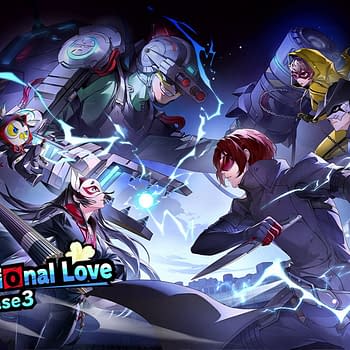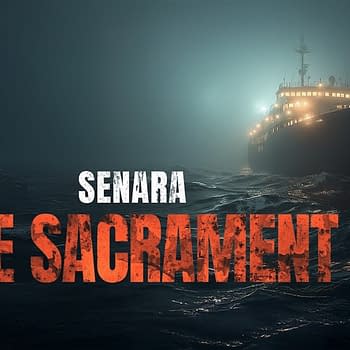Posted in: Dungeons & Dragons, Games, Magic: The Gathering, Tabletop, Wizards of the Coast | Tagged: d&d, DnD, dungeons & dragons, dungeons and dragons, Magic: The Gathering, MTG, Mythic Odysseys of Theros, wizards of the coast, WotC
We Review Dungeons & Dragons: Mythic Odysseys Of Theros
It's a weird thing to say, but Dungeons & Dragons: Mythic Odysseys Of Theros kind of got passed over in a lot of eyes. It's not like Wizards of the Coast just passed this book over, but the world, in general, played the odds against it. First off, Critical Role had a highly-publicized guide of their own come out earlier in the year; then the COVID-19 pandemic happened, which put a lot of things on hold or kept stuff quiet, then D&D Live 2020 came around and put all the attention on Icewind Dale: Rime Of The Frostmaiden. So the book kinda got ignored more due to circumstance than anything else, which seems unfair since it only came out in July. So now that we've been able to get into some games online and experimenting with this book, we can finally give a proper review of it.
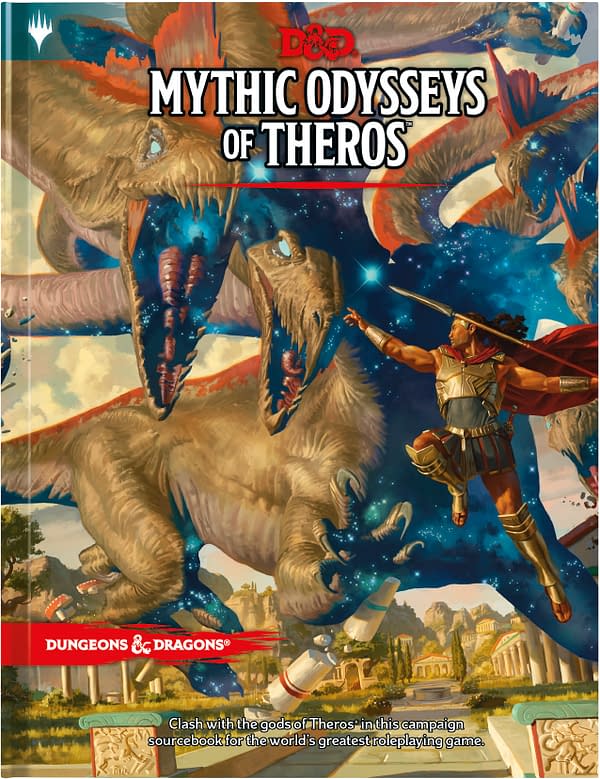
So if you're not familiar with Mythic Odysseys Of Theros, this is the second Magic: The Gathering-themed sourcebook, which serves as a companion piece to Guildmasters' Guide To Ravnica. But where GGTR set up everything you needed to know about operating in the MTG world with D&D rules (like the Eberron guide from 2019), this one adds more material and a specific setting as it focuses on the Theros block of content that was added to the trading card game between 2013-2014. While the land and the gods may be a tad different, the reality is this is basically WotC's take on Greek Mythology without incorporating any of the mythoi from the real-world, but playing on enough of it to give it an MTG spin.
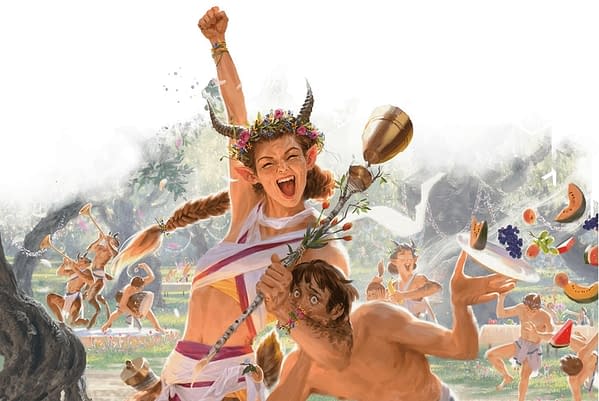
The first two chapters of the book focus on the Character Creation and the actual Gods of Theos. For the characters, there's some fun stuff here but not a ton like in the last book. You're given access to more races with Centaur, Satyr, Triton, Leonin, and a more robust Minotaur. But when it comes to actual subclass options, they only have stuff for the Bard and Paladin. There are supernatural gifts you can add, but they're more for flavor than anything else. As far as the gods go, this is their way of introducing you (or reintroducing you) to the many gods that oversee the world. You're going to find a lot of similarities between Greek gods and these gods, which you'll just have to get used to the idea that Hades is called Erebos, Apollo is now Heliod, and Demeter is now Karametra (seen below). You can choose who to worship and pay homage to, which gets you bonuses. But with all gods, there's always a price as favors don't come freely, with specific Dungeons & Dragons rules tied to it.
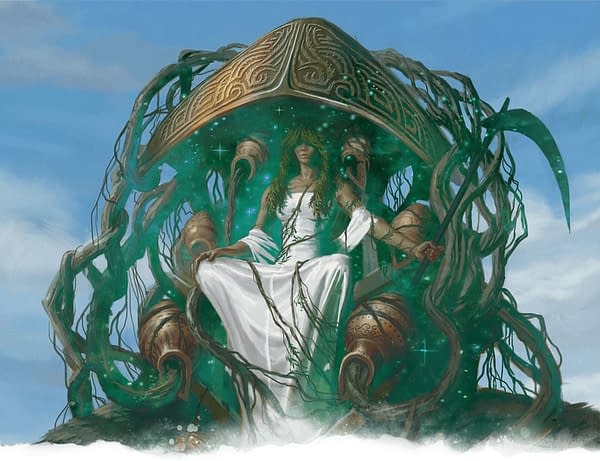
The third section deals with the Realms of Gods and Mortals, as they explore all of the locations you can visit in and around Theros. This is basically a DM's delight as you are given the details and parameters of everything from the mortal realm to the places where gods go to rest and plot. The vast majority of it is on the Mortal Realm, so don't get too excited over the prospect of going off into some kind of weird plane of existence (beyond the one you're already in). Some of the more entertaining ones to read about included The Siren Sea, Oreskos, and Skola Vale. We'll keep this spoiler-free for anyone who wishes to delve into this book, but you're given a wide range of places to take your players for whatever quest you're looking forward to plotting.
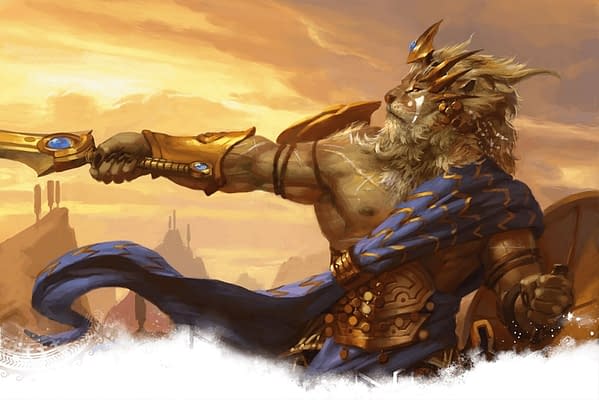
The fourth chapter to Mythic Odysseys Of Theros is pretty much a DM-only area, as is on Creating Theros Adventures. This book only comes with one adventure to start your players off on. The rest of it comes with ideas and plans. Much like a city planner, it's up to you where to put things and put people at this point. There are two primary types of adventures, which seem to be in line with Greek mythology: God-based adventures and Nautical adventures. A lot of the planning for these can be based in choices or in RNG, as they have incorporated the Dungeons & Dragons-style of rolling specific dice to get a very random adventure going. There's a lot you can play with here, especially for players who are tied to a specific god as you can tailor-make an adventure around them.
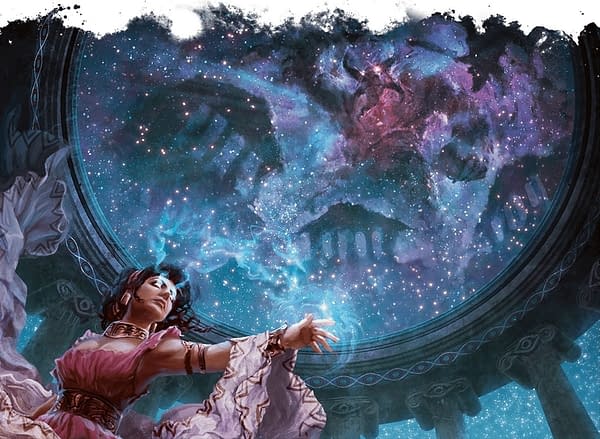
The last two chapters are the standard fare for most sourcebooks in Dungeons & Dragons as one focuses on treasures, and the other focuses on Friends and Foes. The treasures section is super brief, and with good cause, as giving yourself the power of the gods can be tempting. So they've made a lot of the treasures containing their power, but also a pain to get ahold of. The friends and foes section will let you know what kind of beasts are in the wild that can help you out or make your life miserable. Most of it is a Monster Manual for creatures set in this particular kind of setting, so be prepared to fight many creatures who are both deadly and intelligent. There's also a bonus section full of Maps of Theros because while you can make up whatever you'd like as a DM, Theros is a location that is based in the story within Magic: The Gathering, with specific locations referenced in the set. So you can visit places referenced in the TCG.
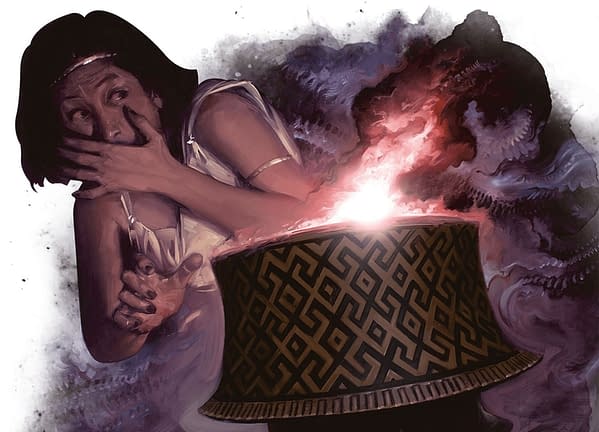
So… here's the thing with Dungeons & Dragons: Mythic Odysseys Of Theros. It serves its purpose well, and it gives more context to a specific piece of Magic: The Gathering lore in a Dungeons & Dragons format. But that's really all it is, and in some ways, shows off some of the flaws to MTG as a franchise. We won't expand into this too far, but depending on the kind of player you are, there's an argument that you can miss entire sets of the TCG and not play the game for years, come back, and pick up right where you left off with the caveat of having to learn a few things that changed while you were away. And part of that theory is that some of the sets are just straight up forgettable and don't play into any major storyline or development of the game as a whole. And Theros is one of those sets as it came, did its thing for a year, and barely left a mark on the series. It makes for interesting storytelling, but it fails to seize on a lot of the things that make MTG popular, which shows up in this book as well.
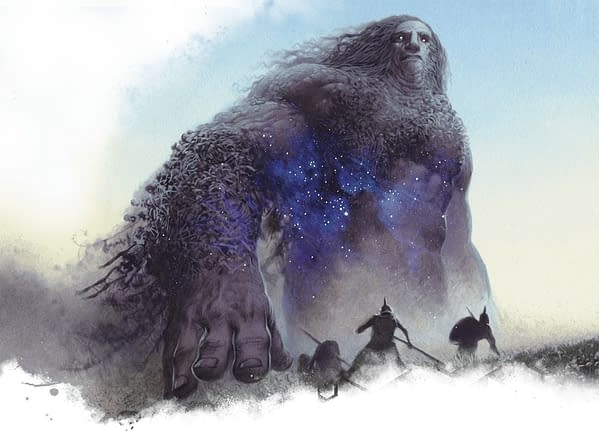
It's not like the two crews at WotC didn't do a good job of making a sourcebook; everything in here works as it should. Maybe some parts need a little tweaking and fine-tuning. But it also feels like a throwaway book made simply to rehook MTG players after Ravnica. Which is a shame because MTG as a series has SO MUCH LORE!!! There are storylines and characters and settings going all the way back to the mid-90s that they could have pulled from to make a sourcebook. Or better yet, make an actual adventure module out of it. This company has access to The Antiquities War, Ice age, the Flood Ages, exploring everything with Weatherlight, and so many more. When you take all of that into account, doing a Dungeons & Dragons book on Theros feels out of place. It's not a bad book, but it does make us wonder what the purpose of doing it was.






